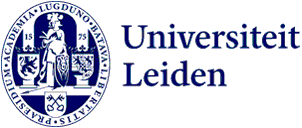Lecture | also on line with Zoom
“Mobile” Afterworlds in the Western Capital of the Liao Dynasty
- Date
- Wednesday 13 April 2022
- Time
- Address
-
University Library
Witte Singel 27
2311 BG Leiden - Room
- Vossius room and online

The existing understanding of funerary art of the middle period in China has relied mainly on what is generally deemed orthodox “Chinese” traditions of ethnicity—from philosophy to protocol to geomancy—rather than the relations between what are considered “Chinese” and “non-Chinese” cultural practices. Tomb-making in the territories of the states founded by northern ethnic groups, such as the Liao (916–1125), Jin (1115–1234), and Yuan (1271–1368) dynasties, has been examined with an eye towards parallels rather than intersections, be they “Chinese vs. Kitan,” “Chinese vs. Jurchen, or “Chinese vs. Mongol.” Drawing a more nuanced picture of cultural localities in the middle period, this talk introduces a corpus of archaeological discoveries from the single area of Datong, Shanxi province, which served as the Western Capital in the Liao dynasty—a powerful state founded by the Kitans from the eastern steppes. Centering on how the residents of Datong configured the spaces designed for the deceased, my discussion unravels the complex relationships between the coffin, the tomb, and the represented space inside tomb chambers. What made the relationship culturally distinctive, I argue, was Datong’s extended “experience” as a host of various peoples of nomadic origins as well as the Chinese. By attending to the operations of the land where culturally distinctive forms of funerary monuments were built, this approach offers the opportunity to move beyond a limited focus upon individuals involved in the tomb-making in ethno-centric terms, opening out to a broader discourse on actions, process, and history.
More about Professor Jeehee Hong.
This event is sponsored by The Hulsewé-Wazniewski Foundation.
